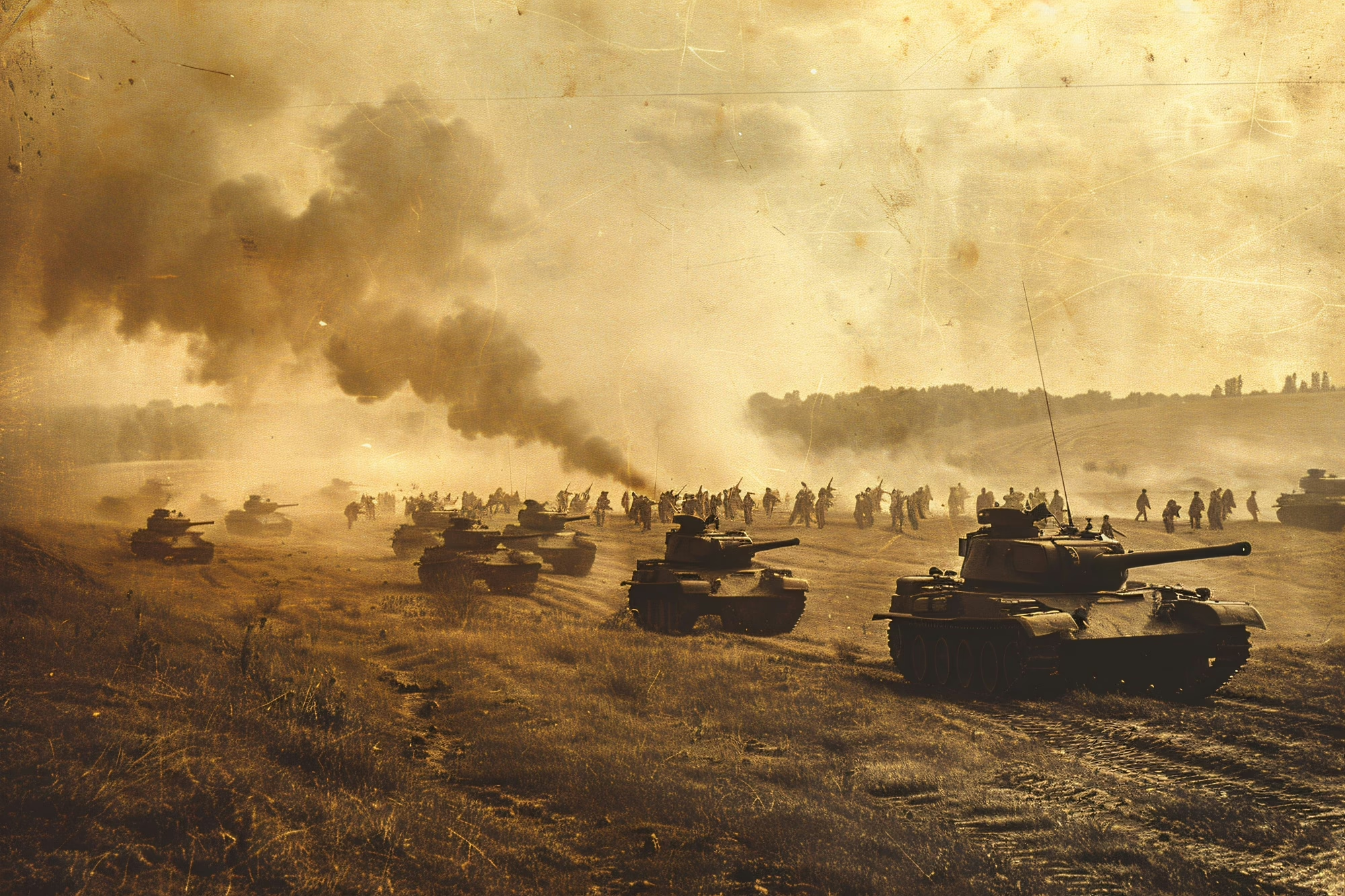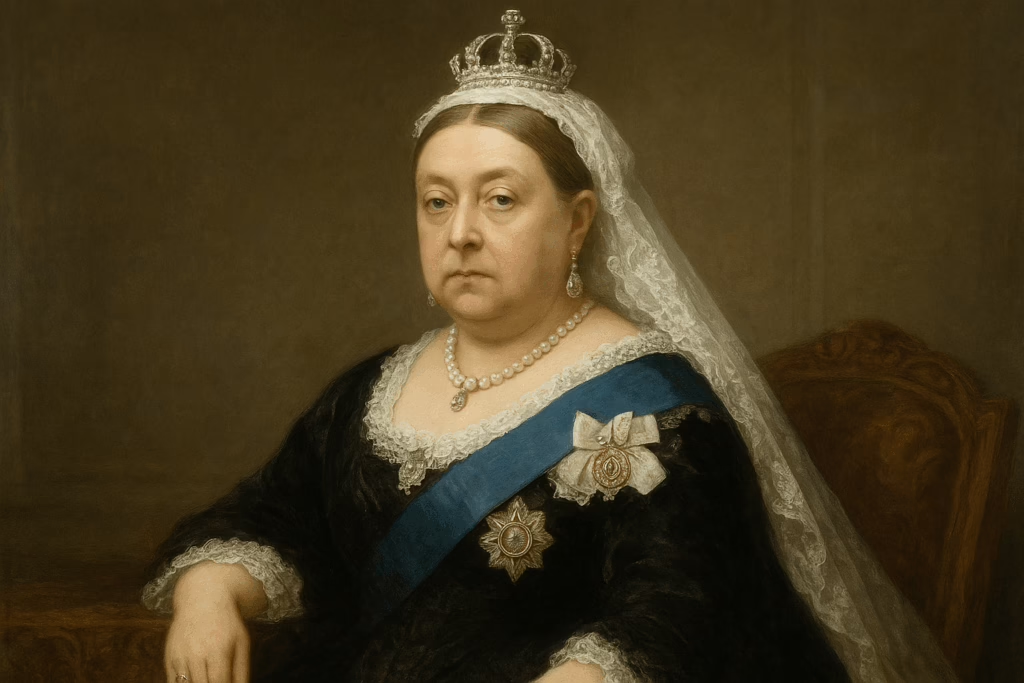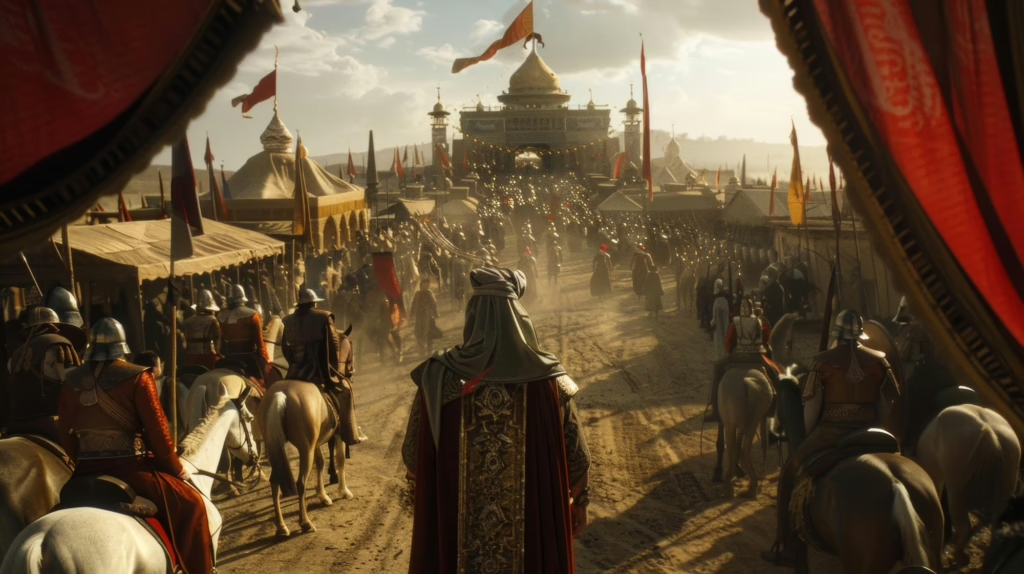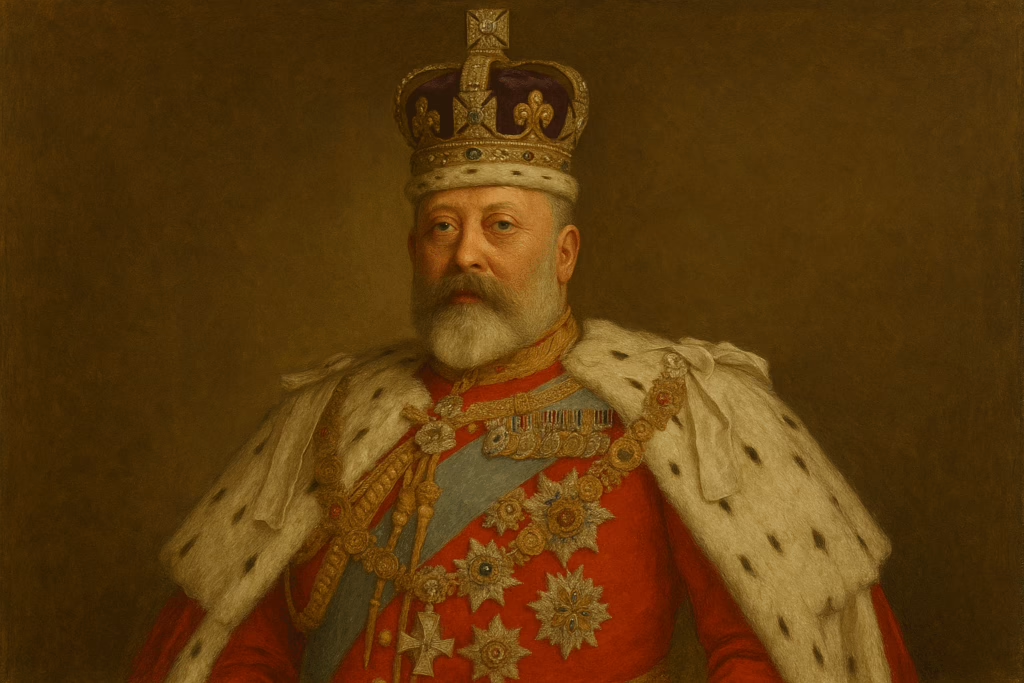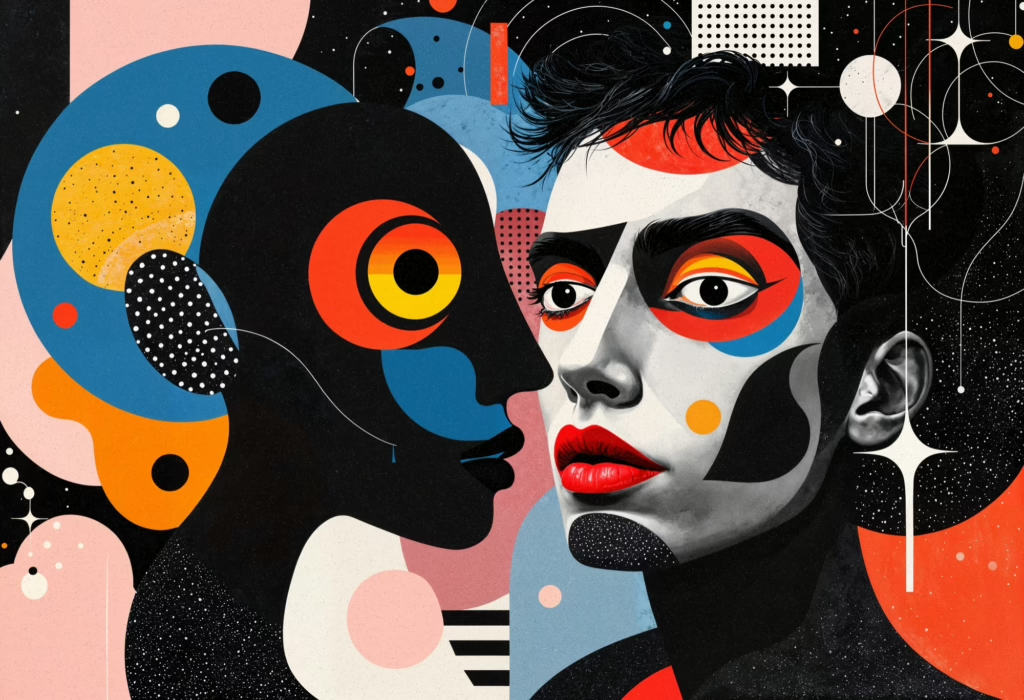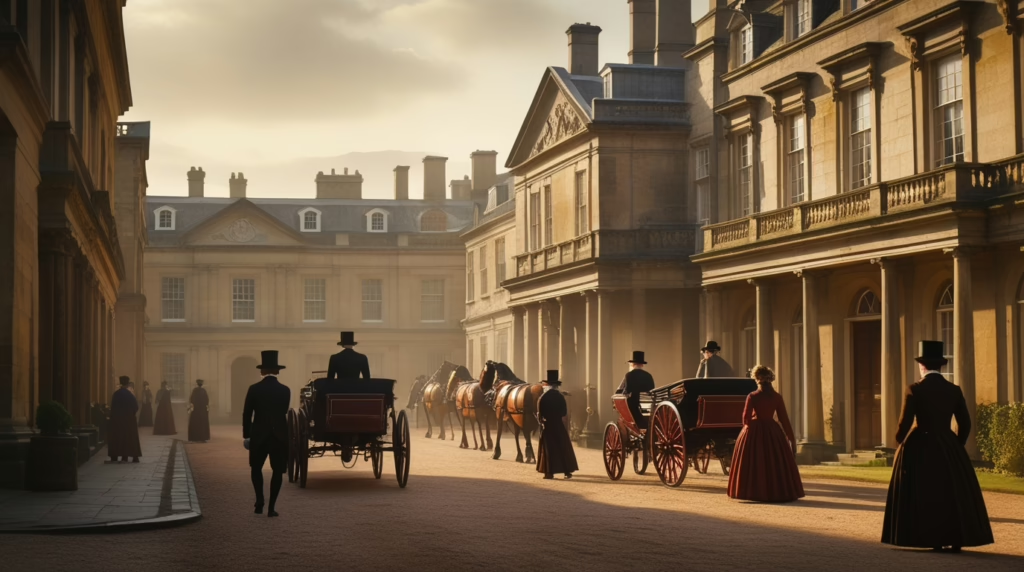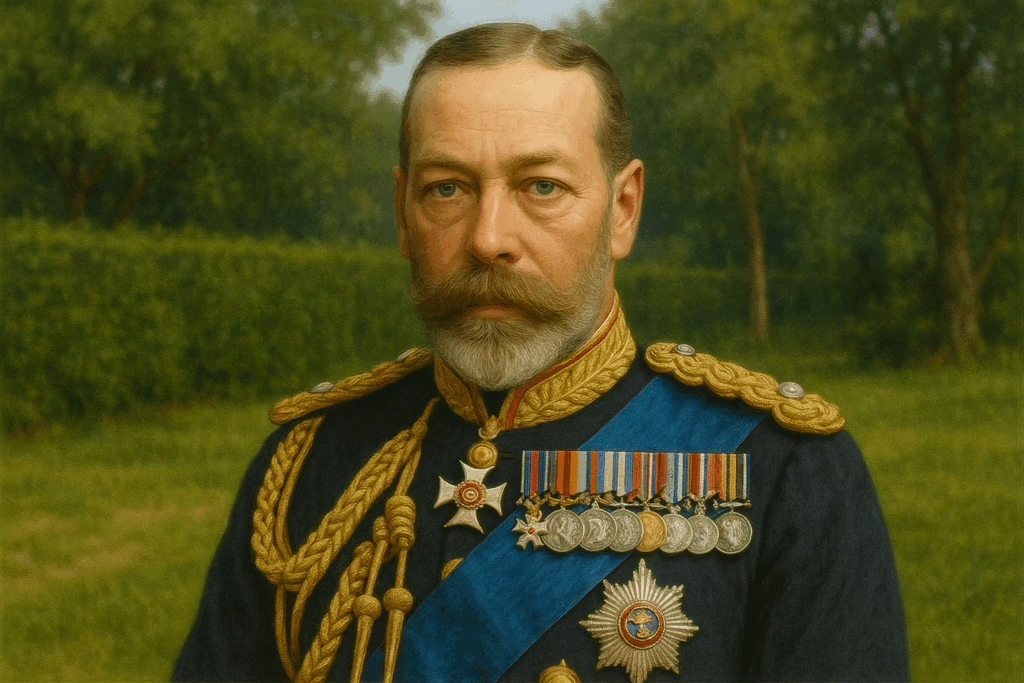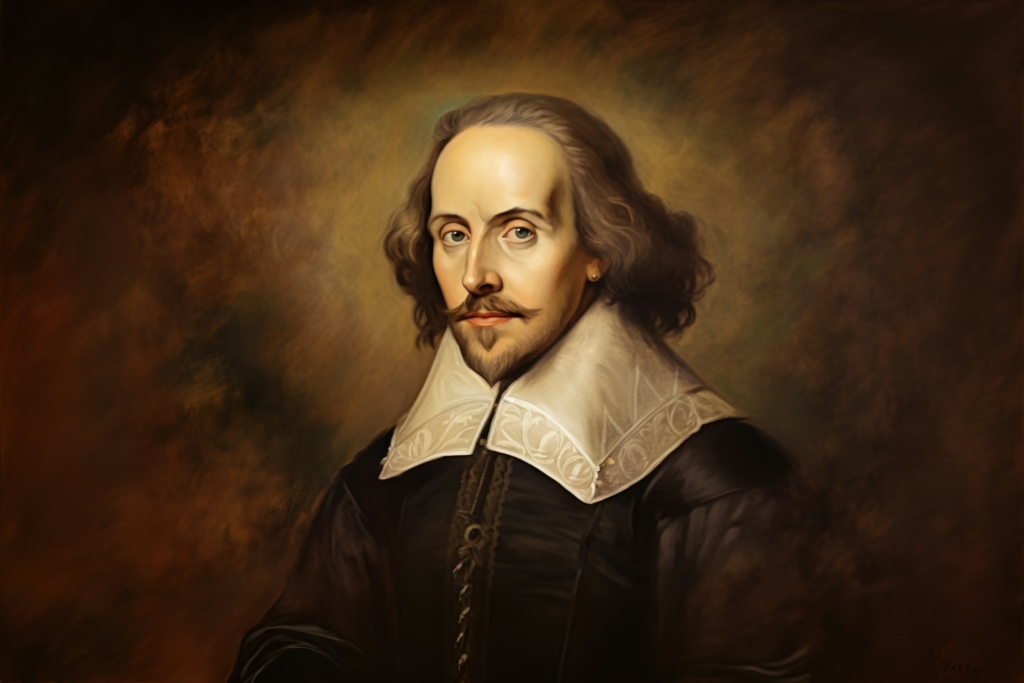The period 1914–1945 is widely regarded as the decisive Modern Age in British (and Anglophone) literature. Two world wars, the collapse of many certainties inherited from the long nineteenth century, the rise of mass politics and mass media, and radical advances in the arts and sciences combined to produce a literary culture that is both experimental and politically urgent. The literature of this period records catastrophe and adaptation, fragmentation and re-making — it deals in trauma, ideological contest, formal invention, and new senses of the individual in history.
This chapter treats the Modern Age as an historical and literary unit while recognising important internal subdivisions. It emphasises British literature, noting where Irish, colonial or international works intersect with and shape British modernity. The aim is to give advanced students a structured, research-ready orientation: a historical map, a taxonomy of authors and genres, succinct critical summaries of major works, thematic and stylistic syntheses, and suggestions for seminar and research projects.
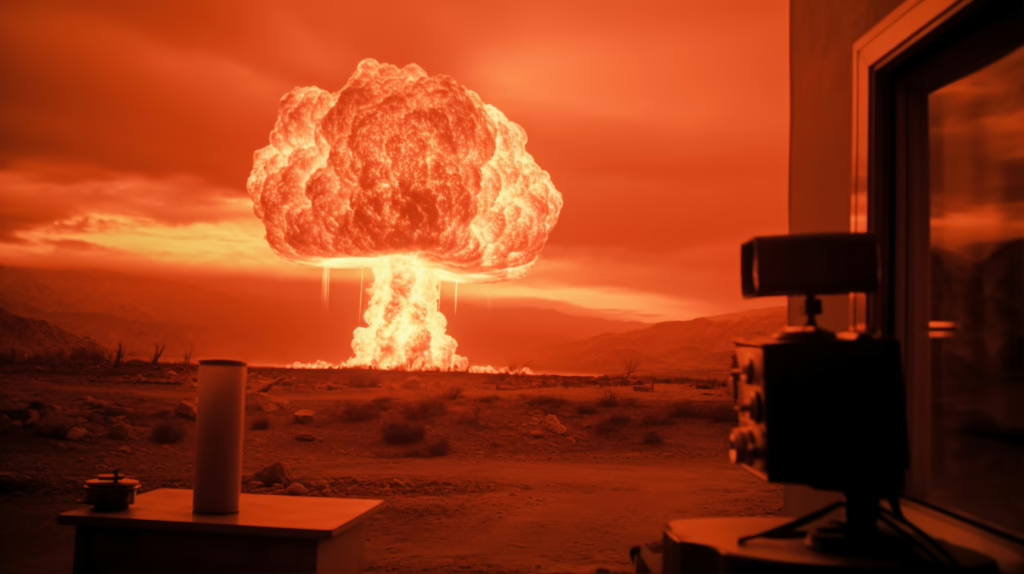
1. Historical skeleton: major events (1914–1945) and their literary consequences
The literary transformations of 1914–1945 can only be understood in relation to the political and social events that shaped readers’ and writers’ lives.
1.1 First World War (1914–1918)
- Immediate effects: Mass mobilisation, industrialised slaughter, dislocation of families, the breakdown of prewar social certainties.
- Literary consequences: The war produced a large corpus of testimony, memoir and poetry. Trench poets (Wilfred Owen, Siegfried Sassoon, Isaac Rosenberg, Edward Thomas, Robert Graves and others) challenged prewar patriotic rhetoric and reshaped the idiom of English poetry toward compressed, shocking realism and moral indictment. Novelists and memoirists (e.g. Ford Madox Ford, Robert Graves) processed the war’s psychological and moral consequences; modernist aesthetic experiments in form and voice — a fractured narrative, interior monologue, montage — were often driven by a need to represent dislocation and trauma.
1.2 Russian Revolution (1917) and ideologies of the 1920s–1930s
- Effect on political imagination: The success of Bolshevism electrified the intellectual left and prompted intense debates about revolution, reform and cultural responsibility.
- Literary consequences: The 1920s and 1930s saw growth in politically engaged writing: writers and poets joined socialist or communist movements, and literature became a platform for debate about class, empire and internationalism. Writers such as George Orwell moved through shifting political commitments; the Popular Front and anti-fascism produced explicit literary responses in the late 1930s.
1.3 Irish independence and the reconfiguration of British identity (1916–1922)
- Events: Easter Rising (1916), War of Independence (1919–1921), establishment of the Irish Free State (1922).
- Literary consequences: These events altered the relationship between Irish writers and British cultural institutions and infused British literature with new nationalist and post-colonial questions. Yeats, Joyce, and others reshaped their relation to Britain, while Anglo-Irish themes circulated in British letters (Elizabeth Bowen, J. M. Synge’s influence).
1.4 Interwar social and economic crisis (1918–1939)
- Aspects: Demobilisation, the 1926 General Strike, unemployment in the 1930s, and the Great Depression.
- Literary consequences: The politics of class, unemployment and social dislocation became central in fiction and drama. Social realist novels and documentary reportage examined urban poverty and industrial decline; writers such as George Orwell and R. H. Tawney debated the moral and structural causes of inequality. The 1930s also saw an explicitly political literature (proletarian novels, anti-fascist writing) and the emergence of literary networks tied to political causes.
1.5 Rise of fascism and the approach to WWII (1930s)
- Effect: The threat posed by Hitler’s Germany and Mussolini’s Italy forced many intellectuals to confront immediate political danger.
- Literary consequences: Spain (1936–39) and the Spanish Civil War became a catalytic event for British writers (e.g., George Orwell’s Homage to Catalonia, poets and novelists who fought or reported on Spain); the 1930s produced explicitly political poetry (W. H. Auden, Stephen Spender), plays and essays that aimed to mobilise public opinion against totalitarianism.
1.6 Second World War (1939–1945)
- Effect: Total war, aerial bombing of British cities, mass evacuation, rationing, and the mobilisation of culture for wartime morale and propaganda.
- Literary consequences: Writers turned to wartime reportage, government commissions, radio drama and poetry addressing public fear and courage. The war fostered both patriotic verse and satirical/critical accounts (Poems by Auden, MacNeice; novels and plays by Graham Greene, Elizabeth Bowen). The wartime experience accelerated modernist fragmentation and, after 1945, encouraged reappraisals of cultural, social and imperial order.
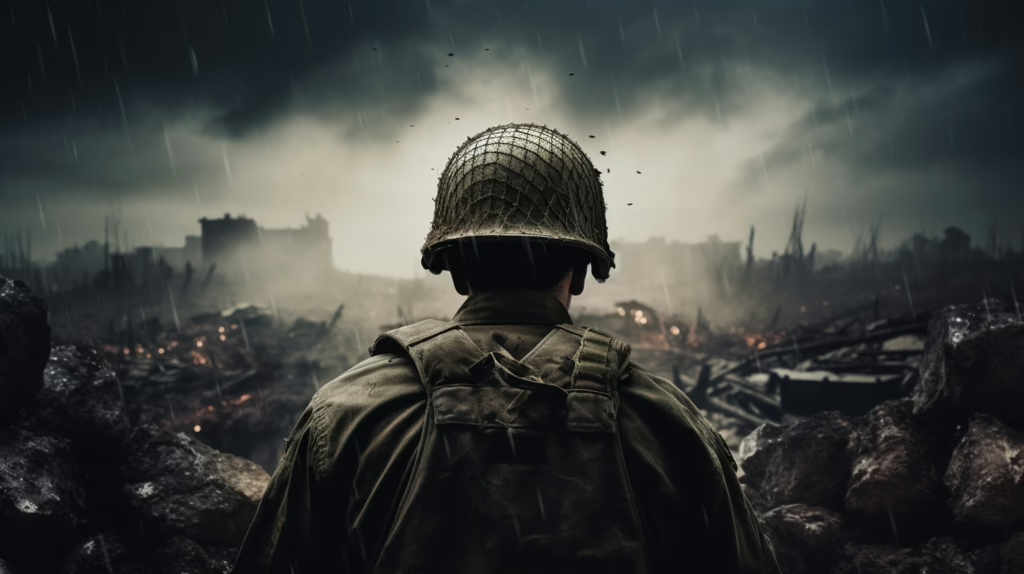
2. Subdivisions within the Modern Age (quick schematic)
For analytical clarity the period 1914–1945 can be usefully divided into overlapping literary phases:
- War and immediate aftermath (1914–1920). Trench poetry, memoir, immediate modernist responses (e.g., Eliot’s The Waste Land, 1922, emerges from postwar disillusion).
- High modernism and consolidation (1920–1929). Modernist masterworks; experiments in narrative and lyric (Joyce, Woolf, Eliot).
- Political modernism and social engagement (1930–1939). The Great Depression and rise of fascism pushed writers toward social realism, political poetry and documentary forms (Auden, Orwell, the Left Book Club network).
- Wartime modernity (1939–1945). Literature aligned to or resisting state mobilisation: documentary reportage, radio drama, wartime poetry (Auden’s later poems, R. S. Thomas, Kathleen Raine), and novels wrestling with dislocation and moral endurance.
These are heuristic; many authors move across categories and combine formal innovation with political engagement.
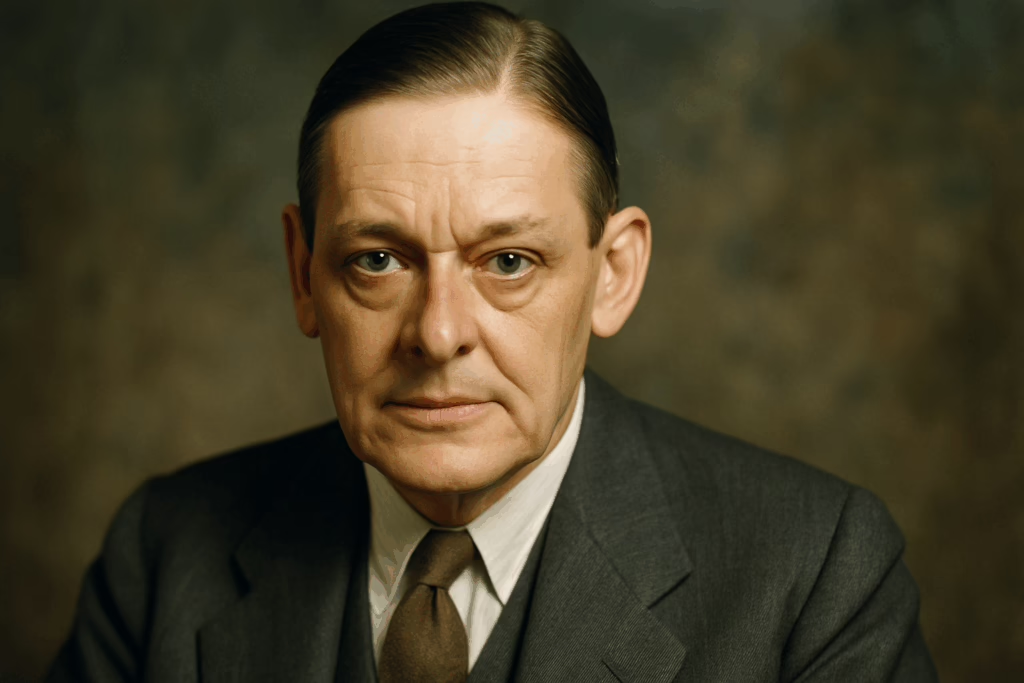
3. Key literary movements, institutions and media
3.1 Modernism
- Core features: Formal experimentation (stream of consciousness, free indirect discourse, montage), dense allusion and intertextuality, fragmentation and irony, mythic method (Eliot).
- Central practitioners in Britain: T. S. Eliot (poetry and criticism), Virginia Woolf (novelistic experiment), James Joyce (Irish but central), D. H. Lawrence (psychological realism and symbolic myth), Ezra Pound (though American, central to modernist poetics), Ford Madox Ford, and Katherine Mansfield (short story innovation).
3.2 War poetry and testimonial lyric
- Features: vivid sensory registers, anti-heroic rhetoric, ironic inversion of classical tropes, exploration of trauma and memory (Owen, Sassoon, Rosenberg, Graves, Thomas). War poetry is both testimonial and formally experimental.
3.3 Leftist and documentary literature
- Features: Engaged, activist writing committed to social change in the 1930s (Auden to some extent, George Orwell’s reportage and novels, W. H. Auden’s politically inflected poems; John Steinbeck is American but comparative). The Left Book Club (founded 1936) helped disseminate political fiction and non-fiction.
3.4 Bloomsbury and Hogarth Press
- Bloomsbury Group: An influential circle (Virginia Woolf, Lytton Strachey, E. M. Forster, Leonard Woolf) promoting modernist aesthetics and experimental prose; Hogarth Press (founded 1917) published many modernist and left-leaning texts (Woolf’s essays, translations, T.S. Eliot’s early work in the UK).
3.5 Little magazines and The Criterion
- Role: Journals such as The Egoist, The Dial, The Little Review, The Criterion (edited by Eliot) were crucial sites for launching modernist works and debate. They allowed for experiments that commercial publishers might avoid.
3.6 Broadcasting and film
- BBC: Founded in the 1920s, the BBC became a major public platform for drama, poetry, lectures and wartime information, shaping literary reception and encouraging the composition of radio plays.
- Film: British cinema grew; documentary film (GPO Film Unit, John Grierson) influenced literary documentary forms.
4. Major authors and their works: categorical survey with short summaries
Below the principal writers are grouped by genre with short summaries of representative works. The choices emphasise Britain but include Irish and colonial figures whose work deeply influenced British literature during this period.
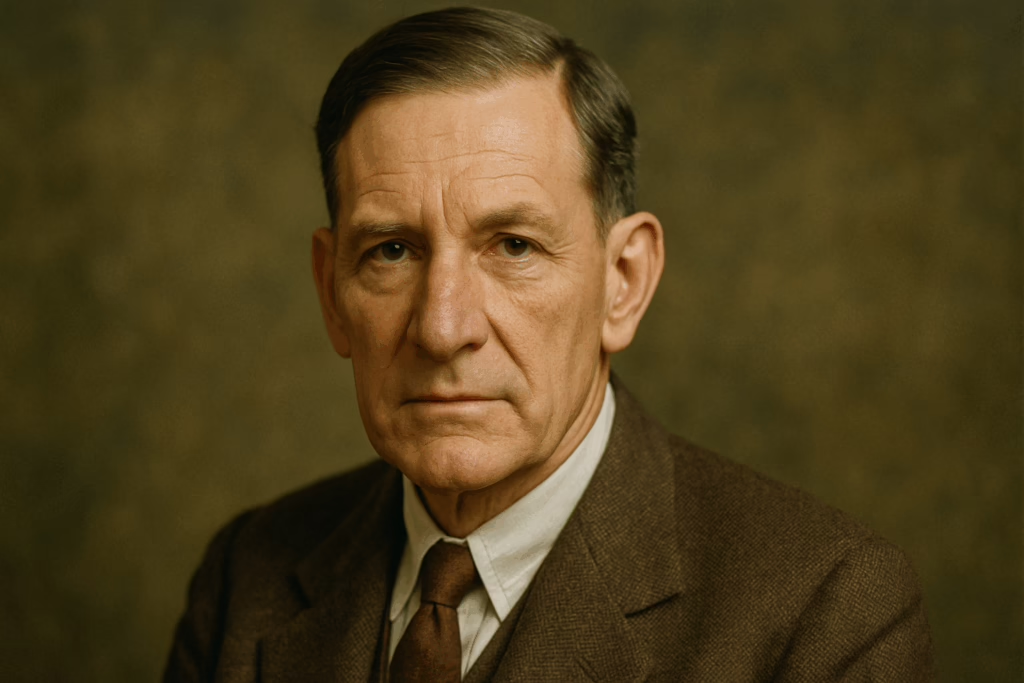
4.1 Poets
T. S. Eliot (1888–1965) — poet, critic (naturalised British 1927)
- Major works: The Waste Land (1922); Ash Wednesday (1930); Four Quartets (published as a set in 1943 after sections composed 1936–1942).
- Short summary & significance: The Waste Land is the epochal modernist poem, a montage of myth, personal voice and cultural fragments that captures postwar desolation and the search for spiritual re-integration; Four Quartets (a later, more spiritual, lyrical set) considers time, redemption and history in meditative form. Eliot’s critical essays (e.g. “Tradition and the Individual Talent”) helped define modernist poetics.
Wilfred Owen (1893–1918)
- Major works: Selected poems collected posthumously (e.g. “Dulce et Decorum Est,” “Anthem for Doomed Youth,” “Strange Meeting”).
- Short summary & significance: Owen’s poems use graphic sensory imagery, pararhyme and irony to subvert patriotic myth, insisting on the brutal reality of mechanised slaughter; his work became canonical for war remembrance.
Siegfried Sassoon (1886–1967)
- Major works: Collected war poems (Counter-Attack, The War Poems), memoirs.
- Short summary & significance: Sassoon combined biting satirical attacks on the military establishment with graphic representation of trench life; as both activist and poet he helped publicise the truth about the front.
W. H. Auden (1907–1973)
- Major works: Early collections Poems (1930), Look, Stranger!; politically engaged poems of the 1930s (e.g. “Spain 1937”); later works include “September 1, 1939” and war poems.
- Short summary & significance: Auden’s 1930s poems articulate a modern political conscience; his formal range extends from tight stanzaic forms to more discursive modern lyric. He was central to the “Thirties” poets who combined modernist technique with political urgency.
Robert Graves (1895–1985)
- Major works: War poems; later mythic studies (The White Goddess, 1948) and memoir Good-Bye to All That (1929).
- Short summary & significance: Graves’s early poetry and memoir record combat and disillusionment; his later mythic scholarship shaped postwar literary mythopoesis.
W. B. Yeats (1865–1939) — Irish but central
- Major works: Major collections include Responsibilities (1914), The Tower (1928), The Winding Stair (1929).
- Short summary & significance: Yeats’s later poetry blends personal myth, symbolism and Irish national themes; he shaped modern lyric with sustained mythic vision.
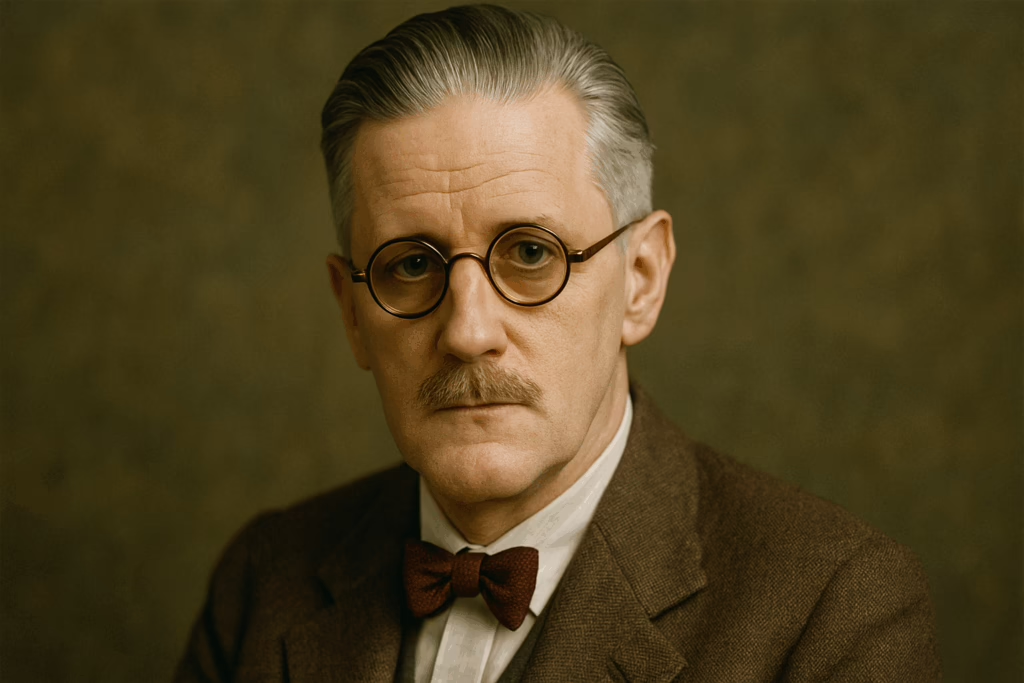
4.2 Novelists and short-story writers
James Joyce (1882–1941) — Irish, but profoundly influential in Britain
- Major works: A Portrait of the Artist as a Young Man (1916); Ulysses (1922); Finnegans Wake (1939).
- Short summary & significance: Joyce’s revolutionary syntactic and lexical experiments, interior monologue and mythic reconstructions of Dublin redefined the novel’s possibilities. Ulysses particularly reimagines epic structure for modern urban consciousness.
Virginia Woolf (1882–1941)
- Major works: Jacob’s Room (1922); Mrs Dalloway (1925); To the Lighthouse (1927); The Waves (1931); essays including A Room of One’s Own (1929).
- Short summary & significance: Woolf’s novels explore stream of consciousness, temporality, and the psychology of everyday life; she interrogates gender, artistic vocation and social structures while advancing modernist narrative techniques.
D. H. Lawrence (1885–1930)
- Major works: Sons and Lovers (1913; often earlier but influential), Women in Love (1920), The Rainbow (1915; suppressed until 1920 in Britain).
- Short summary & significance: Lawrence’s novels probe sexual psychology, creative impulse and industrial modernity; his insistence on embodied feeling and symbolic motif unsettled public and critical tastes.
Ford Madox Ford (1873–1939)
- Major works: The Good Soldier (1915); Parade’s End tetralogy (1924–28).
- Short summary & significance: Ford’s innovative narrative strategies — unreliable narration, fragmentation — interrogate prewar bourgeois morality and the dislocations of modern life.
E. M. Forster (1879–1970)
- Major works: A Room with a View (1908), Howards End (1910), A Passage to India (1924).
- Short summary & significance: Forster’s humanistic narratives examine connection, class, and imperial encounter; A Passage to India addresses the political and psychological impasses of empire with ambivalence and moral sympathy.
George Orwell (Eric Blair, 1903–1950)
- Major works within period: Down and Out in Paris and London (1933), Burmese Days (1934), The Road to Wigan Pier (1937), Homage to Catalonia (1938), Coming Up for Air (1939), Animal Farm appears in 1945 (counts to the end of our period).
- Short summary & significance: Orwell’s writing moves from reportage and social documentary to satirical political allegory; his work is committed to clarity and social truth.
Aldous Huxley (1894–1963)
- Major works: Crome Yellow (1921), Point Counter Point (1928), Brave New World (1932).
- Short summary & significance: Huxley’s social satires and dystopias interrogate technology, commodification and the mechanisation of human life; Brave New World is a prescient critique of technocratic culture.
Graham Greene (1904–1991)
- Major works: Stamboul Train (1932), Brighton Rock (1938).
- Short summary & significance: Greene’s novels explore moral ambiguity, Catholic conscience, and political instability, often in claustrophobic, suspenseful forms.
Evelyn Waugh (1903–1966)
- Major works in period: Decline and Fall (1928), Vile Bodies (1930), A Handful of Dust (1934), Brideshead Revisited appears in 1945.
- Short summary & significance: Waugh’s satirical novels lampoon interwar society; Brideshead is a more ambivalent, elegiac exploration of faith and aristocratic decline.

4.3 Short story and early-modern forms
Katherine Mansfield (1888–1923)
- Major works: Story cycles and individual stories (“The Garden Party,” “Bliss,” “Prelude”).
- Short summary & significance: Mansfield refined impressionistic short fiction with compressed psychological detail and lyrical prose. She is central to modernist short-form innovation.
H. E. Bates, Elizabeth Bowen, and other short-story writers
- Significance: Bowen’s short fiction and novel forms are vital for studying Anglo-Irish modernities and domestic crisis.
4.4 Drama and radio drama
George Bernard Shaw (1856–1950)
- Works in period: Saint Joan (1923), Pygmalion (1913–14), later plays.
- Significance: Shaw’s social theatre continued to influence the public stage with didactic and polemical plays.
T. S. Eliot — Murder in the Cathedral (1935), The Family Reunion (1939)
- Significance: Eliot’s verse drama draws on religious and ritualistic sources; he brought modernist sensibility to the stage.
J. B. Priestley (1894–1984)
- Works: The Good Companions (novel, 1929), plays including Dangerous Corner (1932), later An Inspector Calls (1945) — shows his social concern and interest in time and responsibility.
Broadcast drama
- Significance: The BBC commissioned and broadcast radio plays in the 1930s–1940s; the new medium influenced playwrights and public culture.
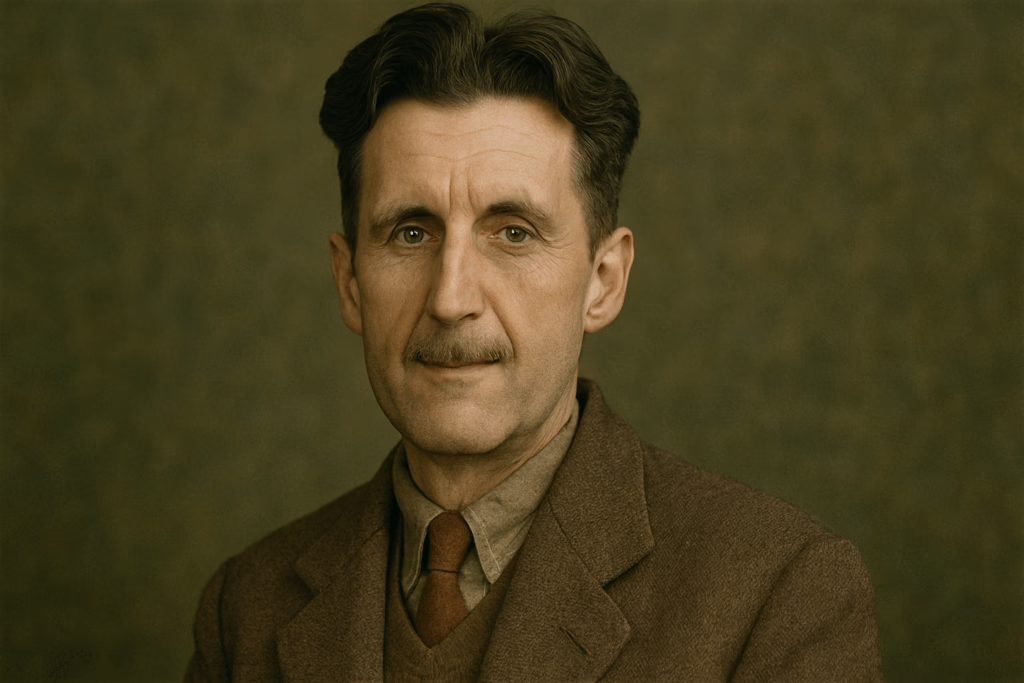
4.5 Non-fiction, essays and criticism
T. S. Eliot — critical prose
- Works: “Tradition and the Individual Talent” (1919), essays shaping modernist criticism.
- Significance: Eliot’s criticism articulated the formalist and historical basis for modernist experiments.
Virginia Woolf — essays
- Works: Modern Fiction (1919), A Room of One’s Own (1929).
- Significance: Woolf’s essays argue for new artistic freedom and for attention to suppressed (especially female) voices in literature.
George Orwell — reportage and essays
- Works: Social reportage and polemical essays that interrogate political policing and propaganda, later culminating in allegorical fiction.
5. Close summaries of landmark works (detailed reading guides)
Below are tighter close readings and pedagogic entry points for key texts that represent crucial nodes in the Modern Age.
5.1 The Waste Land (T. S. Eliot, 1922) — short analytic guide
Form and technique: A highly allusive, fragmentary poem in five sections; uses multiple voices, mythic parallels (Fisher King), multilingual quotations and collage-like technique.
Themes:
- Cultural fragmentation and spiritual desolation after the war.
- The need for ritual and spiritual renewal (the poem’s concluding references to Eastern rituals and Christian liturgy suggest possible paths to re-integration).
- The poem juxtaposes contemporary urban squalor with mythic models to provide form and interpretive purchase on cultural collapse.
Interpretive angles: Mythic method, intertextuality, the ethics of allusion (does Eliot “save” the modern world through classical recovery?), the poem’s performance and reception history, and the transformations of lyric voice.
Seminar questions: How does Eliot’s use of multiple discourses (literary, religious, popular) produce an ethical argument about cultural repair? Compare the poem’s mode with war poetry’s testimonial lyric.

5.2 Mrs Dalloway (Virginia Woolf, 1925) — analytic guide
Form and technique: Single-day narrative, interior monologues woven by free indirect style; shifting focalisation; juxtaposition of Clarissa Dalloway’s social life and Septimus Warren Smith’s trauma.
Themes:
- Interior life and social exteriority; the afterlife of trauma; the relation of individual memory to public ritual (the party).
- Time as subjective duration (Proustian echoes), the fluidity of identity and the social limits of language.
Interpretive angles: Feminist readings of Clarissa’s constrained liberty; psychological representation of trauma; the ethics of representation (Woolf’s elegiac sympathy for Septimus vs Clarissa’s social concerns).
Seminar prompt: How does Woolf stage interdependence between private sorrow and public performance? In what sense is Mrs Dalloway an argument about aesthetic and moral attention?
5.3 A Passage to India (E. M. Forster, 1924) — analytic guide
Form and technique: Third-person narration with an ethically engaged narrator; uses India as testing ground for cross-cultural encounter; episodic plot structure.
Themes:
- The impossibility of full understanding across colonial divides; the limits of liberal humanism confronted by political and cultural difference.
- Forster’s critique of British imperial arrogance and his exploration of spiritual and aesthetic forms of “connection.”
Interpretive angles: Forster’s political ambivalence (sympathy for Indian subjects, but limited political prescription); the novel’s formal use of encounter scenes (the Marabar Caves), the epistemology of misunderstanding.
Seminar prompt: Does Forster’s novel envision reconciliation or merely diagnose misunderstanding? How does the narrative style enable or inhibit ethical sympathy?
5.4 Ulysses (James Joyce, 1922) — analytic guide (contextual)
Form and technique: A radical, encyclopaedic reworking of Homeric structure into a single Dublin day (16 June 1904); employs stream-of-consciousness, parodic pastiche and dense allusion.
Themes: Urban consciousness, mythic revaluation, the epiphany as modernist moment, new forms of secular ritual.
Interpretive angles: Narrative technique and its political consequences; Joyce’s challenge to conventional plot and language; Ulysses as a foundational text for literary modernism.
Pedagogic caveat: Joyce is often studied alongside British modernists despite his Irish identity; the novel’s radicality influenced subsequent British novelists and the shape of the Modern Age.
5.5 Homage to Catalonia (George Orwell, 1938) — analytic guide
Form and technique: First-person reportage and memoir about Orwell’s experiences fighting with POUM in the Spanish Civil War.
Themes:
- Witnessing factionalism and political betrayal on the Republican side; disillusionment with both Stalinism and naïve revolutionary romanticism.
Interpretive angles: The book is part political testimony, part meditation on ideological truth and integrity; it helped form Orwell’s later commitments to clarity and anti-totalitarian satire.
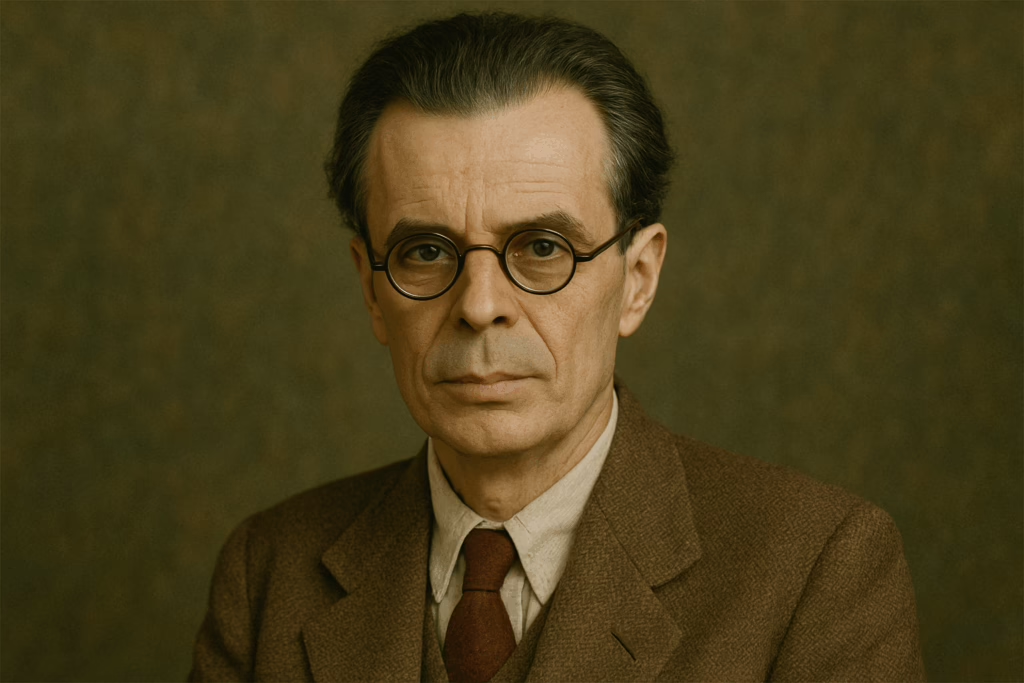
5.6 Brave New World (Aldous Huxley, 1932) — analytic guide
Form and technique: Dystopian satirical novel that imagines a technocratic future where human beings are engineered for social stability.
Themes:
- The commodification of pleasure, the loss of individuality, the ethical costs of engineered harmony.
Interpretive angles: Read as critique of utilitarian and technocratic modernity; juxtapose Huxley’s diagnosis with Orwell’s later dystopia (Nineteen Eighty-Four).
6. Major themes and stylistic tendencies: a synthetic account
6.1 Fragmentation and myth
- Many modernist writers respond to historical fragmentation (war, social collapse) by using myth as organising principle (Eliot) or by fragmentary montage (Joyce).
6.2 Interiority and narrative voice
- The modern novel increasingly seeks to represent consciousness: stream of consciousness, free indirect discourse, and interior monologue become central representational resources (Woolf, Joyce, Lawrence).
6.3 Language experiments
- Poets and novelists experimented with syntax, diction and prosody: Eliot’s collage, Owen’s pararhyme, Joyce’s polyglossia, and Woolf’s lyrical sentence.
6.4 Political engagement
- The interwar years produce strongly political art: Auden and the “Thirties” poets, Orwell’s reportage and novels, the Left Book Club’s promotion of politicised fiction, and writers’ responses to fascism and war.
6.5 Memory, trauma and testimony
- Representing trauma is a central ethical problem; poetic and prose forms adapt to testify to suffering (war poets, memoirists) while exploring the limits of language.
6.6 Gender, sexuality and social critique
- Women writers (Woolf, Bowen, Dorothy L. Sayers in detective fiction) and novels addressing changing sexual mores (Radclyffe Hall, Lawrence’s controversial novels) force literature to confront gendered norms and sexual politics.
6.7 Empire, race and the colonial question
- Modernist writing both reproduces and critiques imperial discourses. Conrad’s interrogations, Forster’s A Passage to India, and Orwell’s colonial journalism show divergent ethical positions toward empire.
7. Forms and media: how literature adapted to new technologies and publics

7.1 Little magazines and the modernist public
- Little magazines were crucial to modernist aesthetics and debate (Egoist, Criterion). They permitted radical experiment outside mass market constraints.
7.2 Radio and broadcasting
- The BBC expanded the audience for poetry, drama and public lectures; radio drama became a new creative form (Winston Churchill’s wartime speeches and wartime broadcasts influenced style as well).
7.3 Film and documentary
- Documentary film techniques influenced literary reportage and montage strategies in prose and poetry; the GPO Film Unit and later documentary filmmakers paralleled literary modernism’s interest in montage and realism.
8. Teaching, seminars and research directions
8.1 Seminar clusters (examples)
- War and modernism: Owen, Sassoon, The Waste Land, Ford’s Parade’s End.
- Narratives of interiority: Joyce Ulysses, Woolf Mrs Dalloway and To the Lighthouse.
- Politics and the 1930s: Auden, Spender, Orwell, the Spanish Civil War.
- Empire and modernity: Conrad, Forster, Orwell’s colonial reportage.
8.2 Graduate research prompts
- “Trauma, testimony and the limits of representation: comparative study of Wilfred Owen and Virginia Woolf.”
- “Myth and montage: Eliot and Joyce on cultural repair.”
- “The ontologies of propaganda: literature and broadcasting in Britain, 1939–1945.”
- “Geographies of exile: modernist expatriates in London and Paris (Joyce, Pound, Eliot).”
9. Canon formation, reception history and aftereffects
- The Modern Age created a canonical shift: Eliot, Joyce and Woolf reshaped academic curricula; war poets entered national remembrance; Orwell’s clarity influenced political aesthetics. The period’s aesthetic debates — tradition vs experiment, politics vs autonomy — continue to structure literary criticism.
- Reception underwent change: many modernist works provoked censorship, controversy and legal battles (Joyce’s Ulysses faced obscenity trials, Lawrence’s Lady Chatterley’s Lover banned in Britain until 1960 though privately published in 1928). Debates about readability, public value and the role of art in social life were intense and persistent.

10. Annotated bibliography (selective)
Primary texts (essential editions)
- Eliot, T. S., The Waste Land & Other Poems (Faber & Faber; Norton Critical Editions include commentary).
- Woolf, Virginia, Mrs Dalloway, To the Lighthouse (Penguin/Norton Critical Editions).
- Joyce, James, Ulysses (Gellérf/Modern Critical edition) — exercise caution with annotated scholarly edition.
- Owen, Wilfred, Selected Poems (ed. Jon Stallworthy or similar).
- Sassoon, Siegfried, The Complete Poems (ed. John Stuart Roberts).
- Orwell, George, Down and Out in Paris and London; Homage to Catalonia; The Road to Wigan Pier; Animal Farm (Harcourt / Penguin).
- Huxley, Aldous, Brave New World (Harper/Modern classics).
- Forster, E. M., A Passage to India (Penguin).
- Lawrence, D. H., Women in Love and The Rainbow (Penguin/Wordsworth).
Secondary and contextual reading
- Paul Fussell, The Great War and Modern Memory — seminal on war and modernity.
- Michael Levenson (ed.), The Cambridge Companion to Modernism — broad introduction to modernist practices.
- Hermione Lee, Virginia Woolf (biography) — authoritative account.
- Ian Ousby, The Road to Verdun (context for war memory).
- Christopher Ricks, T. S. Eliot and Prejudice (analysis of Eliot’s critical influence).
- Peter Childs & Adalaide Morris, Modernism (critical overview).
- Jean-Paul Sartre or contemporaries on political engagement — for theory of engagement and Marxism in literature.
11. Examination prompts (advanced level)
- “Discuss the ways in which modernist techniques represent the problem of historical collapse in The Waste Land and Ulysses.”
- “Examine the ethical demands of war testimony in Wilfred Owen. How do formal features of his poetry participate in moral argument?”
- “Compare the politics and narrative strategies of Orwell’s Homage to Catalonia and The Road to Wigan Pier.”
- “Analyse the representation of gender and domestic space in Woolf’s To the Lighthouse and Forster’s Howards End.”
- “Discuss the relationship between myth and modernity in Eliot and Yeats.”
12. Conclusion
The Modern Age (1914–1945) is a period of acute historical rupture and extraordinary literary invention. The two world wars, revolution, economic crisis and the rise of mass media transformed how writers imagined individual consciousness, social responsibility and the civic role of art. Formal experimentation (stream of consciousness, montage, mythic structure), testimonial and documentary forms, and politically engaged writing coexist and conflict within the same decades. Studying 1914–1945 requires attention both to aesthetic complexity and to the urgent ethical and political questions that underlay literary practice. For higher-study students, the period remains an unrivalled testing ground for methods that combine close textual analysis with historical contextualisation.

